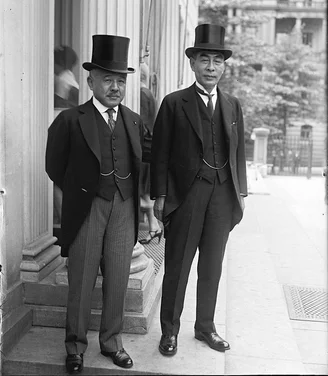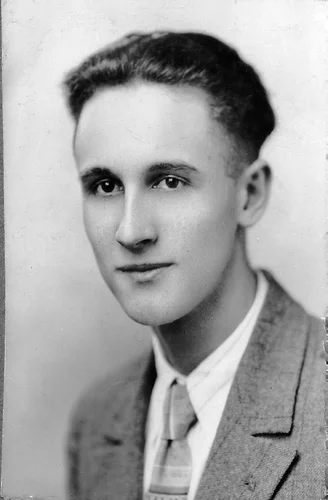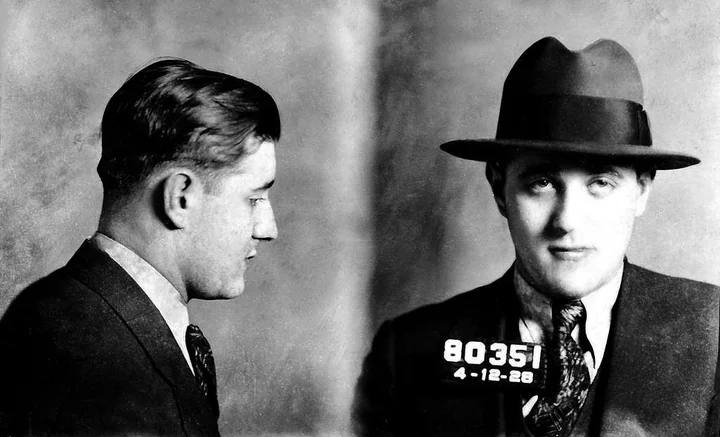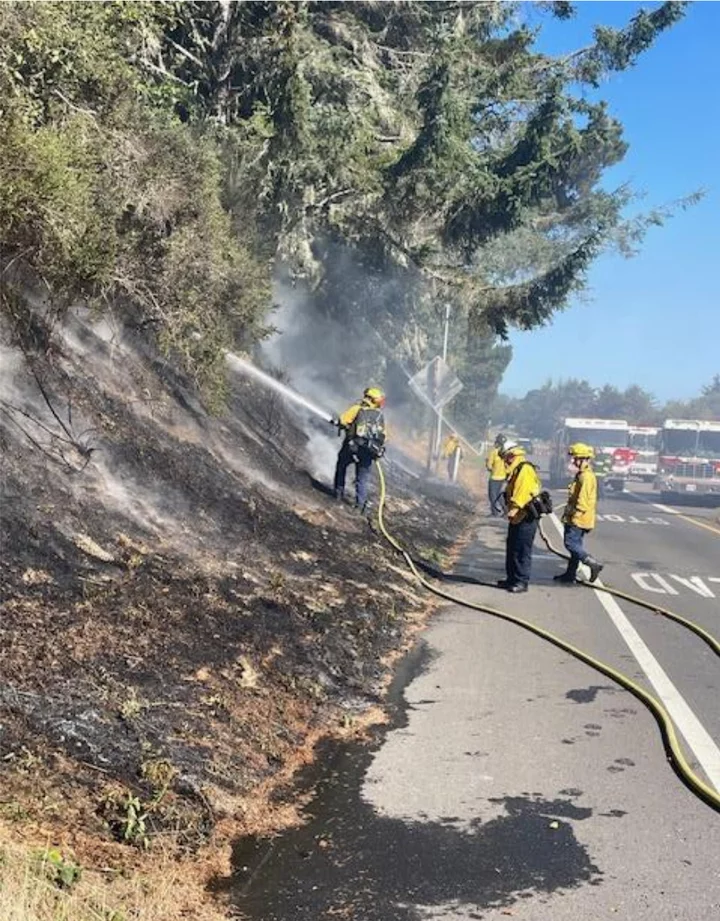PASTOR BETHANY: Jonah Escaped the Whale, But the Point of the Story is What He Escaped After That
Bethany Cseh / Sunday, Sept. 29, 2024 @ 7 a.m. / Faith-y
Painting: Pieter Lastman. Public domain.
Jonah is a short story in the Bible consisting of four small chapters. If you’ve heard about this story, I’m sure you’ve known it to be about a guy and a whale, even inspiring Geppetto’s experience of Monstro, the enormous whale in Pinocchio’s story. It is often relegated to cartoonishly drawn nursery room walls in old Church buildings or into a beloved VeggieTale’s movie. But, as with most ancient stories, I believe this one has a lot to teach us beyond the familiar illustrations of a guy and a whale.
The story of Jonah starts with a prophet being called by God to go to Nineveh. While this might seem like no big deal, Nineveh was the capital city of Assyria and was known for skinning their enemy alive, flaying them in front of their sobbing families. They were known for making their enemy’s loved ones carry the decapitated heads of husbands and fathers on a pole, parading them around the destroyed city. More than likely, Jonah had literal friends or family members who’d been violently oppressed or murdered by the Assyrian army. This was not some simple ask.
God tells Jonah to preach against the great city of Nineveh. Most of us might assume the language of “against” would be a warning of terror with fire and brimstone raining destructively down on these evil peoples, but Jonah understands God’s heart better than most of us and assumes this message is one of undeserved compassionate mercy.
Jonah’s like, nope, and flees in the opposite direction on a boat.
A massive storm comes up and everyone on the boat thinks they’re going to die because someone must have done something wrong to make the gods this angry. After they discover it’s Jonah, Jonah jumps overboard. As he’s sinking under, he’s swallowed by a big fish. The story tells us he’s in this big fish for three days and prays to God, who has mercy on him, and the fish spits Jonah out on land. Jonah journeys toward Nineveh, where he says five words about God’s mercy. Everyone repents, and even the animals repent, and the people wear sackcloth. Jonah becomes furious with God’s mercy for these people, so he sits under a tree and asks to die.
And the story ends with God asking Jonah a question: “Should I not be concerned about these humans and animals?”
That’s it.
Four small chapters that we might easily assume is about a whale. This big fish is only mentioned twice in the first chapter, and yet it’s often the focal point in our imaginations. The whale is not even the point of the story! Unfortunately, I’ve found some church people make it the point of the story, creating some litmus test whether you believe in miracles or not. Like, if you don’t believe Jonah was swallowed by this whale, then you probably don’t believe Jesus was raised from the dead. The whole story, then, becomes about a whale. We do this a lot, don’t we? We tend to place our attention and focus on the parts of our life or the parts of our story that are not the point?
There are parts to our stories that feel insurmountable. Things we’ve been through that feel impossible, like being swallowed by a whale. I know you’ve been through some shit and you’ve survived or are surviving terrible things. But that’s not the whole story.
What if I focused all my attention on not being able to get pregnant and the deep sadness that infertility has caused? When we found out we would never have biological children, I was devastated. Infertility didn’t fit my plan for my life and it began to unravel any expectation for my future where I was angry and frustrated at God.
Infertility is forever part of my story, and while that’s sad, it’s not my whole story and it is certainly not what my story is about.
I am more than “Bethany and infertility,” just as this biblical story is more than Jonah and a whale. I think there’s a bigger story happening in our lives. When we get caught up on that one thing, we can miss the good stuff. Sometimes we don’t know what to do with such a compassionate God. We look towards the seemingly impossible parts of our lives and make them into the story. We take the big things—the things that aren’t meant to be overlooked but certainly not meant to be obsessed over—and we make them into a whale that is difficult to see past.
What whales in your story have you been focused on that have made it hard to see past? Infidelity? Divorce? Illness? Childhood trauma? Poverty? Bullying?
Friends, the whale is not the whole point of this story. The whale in your life that you’ve given so much attention to is not the whole point of your story. It’s in your story, but it’s not your full story. You are more than that whale. Your marriage is more than that whale. Your life and ministry and family and future are more than that whale.
And this story is so much more than Jonah and a whale.
It’s about a God who pursues Jonah, who pursues our enemies, who pursues you and me. It’s about a God who still chooses to work within the situations and contexts we find ourselves in or the ones we’ve made for ourselves. It’s about a God who never gives up and will always have a final word of compassion and grace in every person’s life.
###
Bethany Cseh is a pastor at Arcata United Methodist Church and Catalyst Church. Follow her on Instagram.
BOOKED
Yesterday: 4 felonies, 16 misdemeanors, 0 infractions
JUDGED
Humboldt County Superior Court Calendar: Yesterday
CHP REPORTS
5600 Mm101 N Men 56.00 (HM office): Assist with Construction
ELSEWHERE
RHBB: Coasties Rescue Five after Boat Runs Aground in Humboldt County
RHBB: Woman Receives Major Injuries After Vehicle Plunges Off Trinity Dam Blvd Embankment
RHBB: #RedFire Ignites West of Redway; Air and Ground Resources Responding
TO YOUR WEALTH: The Stock Market Doesn’t Care About Your Politics
Brandon Stockman / Sunday, Sept. 29, 2024 @ 7 a.m. / Money
I once heard a definition on a podcast that the stock market is a gauge of rich people’s feelings. Hyperbolic, but cute.
My experience as a financial advisor has shown that the gauge of people’s feelings — be they rich or not — about the stock market’s performance is politics.
I’ve been emailed to “SELL EVERYTHING” the night former President Trump stunned the world and got elected, had others who refused to invest much in stocks because former President Obama was in office, and heard another regretfully admit that they moved entirely out of stocks under the current administration of President Biden.
Historically, such predictive reactions, if translated into actual investment decisions, would not only have been inaccurate but also significantly hindered wealth accumulation.
The stock market doesn’t care about your politics.
Consider the following scenarios of investors with different political persuasions under the last three administrations:
Let’s say in the midst of the financial crisis of 2008-2009 and right before Barack Obama’s election, you were 100% invested in the Dow Jones Industrial Average but pulled all of your money out because you were convinced that his liberal policies would damage the stock market. Over his two terms, you would have missed a total return of 149.4%.¹
On the other hand, if you were on the left or simply a Never-Trumper and had been 100% invested in the S&P 500 index, but concerned with his character and policies, you sold everything when Donald Trump was unexpectedly elected, you would have missed an increase of 69.6% over the next four years.²
What if you had stopped investing in the S&P 500 upon Joe Biden’s inauguration because you believed what Trump said during the 2020 debate that experts predicted the market would crash if his opponent was elected? According to YCharts as of September 23rd, 2024, you would have missed a total return of 57.10%.³
Lest we be biased over the short term, let’s zoom out even farther.
Your primary concern as an investor should not be the President’s political influence on the stock market, but rather the power of compound interest over the long term. According to Bespoke Investment Group research, historical data shows that investing across administrations—Eisenhower (R), Kennedy (D), Johnson (D), Nixon (R), Ford (R), Carter (D), Reagan (R), H.W. Bush (R), Clinton (D), W. Bush (R), Obama (D), Trump (R), and Biden (D)— significantly outperformed investing under only one party.⁴
If you had invested $1,000 in the S&P 500 since Eisenhower’s inauguration only during Republican presidencies, you’d have $27,400; while if you had done the same in the same time frame under Democratic presidencies, it would be worth $52,100. Before Democrats start gloating over their Republican friends (different party participants can still be friends, right?), there’s a significant twist.
If you had invested across all presidencies, the portfolio would be worth $1,430,000.
This might be worth remembering as we all get caught up in the coming election fervor. I have no idea how the stock market will perform if Donald Trump or Kamala Harris wins in November, and it might be best to avoid financial advisors and pundits who claim they do. What I have observed, however, is that investing in American companies through both ups and downs has far exceeded partisan investing.
By about a million dollars, in fact.
–
Sources:
- Date from Investopedia, “Where Was the Dow Jones When Obama Took Office?” published July 16, 2023.
- Data from Investopedia, “President’s and their Impact on the Stock Market” updated September 16, 2024.
- Data via YCharts on September 23rd, 2024.
- See chart from @bespokeinvest X account posted September 6, 2023. The rest of the data in the article comes from there.
###
Brandon Stockman has been a Wealth Advisor licensed with the Series 7 and 66 since the Great Financial Crisis of 2008. He has the privilege of helping manage accounts throughout the United States and works in the Fortuna, CA office of Johnson Wealth Management which manages over $100,000,000 of assets under management. You can sign up for his weekly newsletter on investing and financial education or subscribe to his YouTube channel. Securities and advisory services offered through Prospera Financial Services, Inc. | Member FINRA, SIPC. This should not be considered tax, legal, or investment advice. Past performance is no guarantee of future results.
THE ECONEWS REPORT: How Will Groundwater be Regulated After This Significant Court Ruling?
The EcoNews Report / Saturday, Sept. 28, 2024 @ 10 a.m. / Environment
Image: Stable Diffusion.
In late August, Russian Riverkeeper and the California Coastkeeper Alliance got what looks like a very significant ruling in their challenge to Sonoma County’s well permitting ordinance. The groups say that by allowing excessive and unmonitored groundwater extraction, the County is failing to protect surface flows in creeks and rivers that fish, wildlife, and recreation need. The court agreed, holding that under the Public Trust doctrine, Sonoma County has “an affirmative duty to take the public trust into account in the planning and allocation of water resources, and to protect public trust uses whenever feasible,” but that the County failed to do so, overlooking impacts on the public trust, including cumulative effects.
In this episode of the EcoNews Report, Friends of the Eel River Conservation Director Scott Greacen and EPIC Executive Director Tom Wheeler talk to three people deeply involved in these questions.
- Rue Furch is a former Sonoma County planning commissioner and veteran Russian River advocate.
- Don McEnhill is the Executive Director of Russian Riverkeeper.
- Drev Hunt is the Legal Director for California Coastkeeper, and one of the attorneys on the case, with Jaime Neary of Russian Riverkeeper, Daniel Cooper of Sycamore Law, and Amy Minteer and Michelle Black of Carstens, Black and Minteer LLP.
Further reading:
- California Coastkeeper Alliance
- Russian Riverkeeper
- Carstens, Black and Minteer
- Sycamore Law
- RussianRiverkeeper v Sonoma County Ruling (PDF link)
- Press-Democrat editorial: Time to revisit county groundwater rules: Groundwater isn’t an unlimited resource, but it’s often treated that way
- LA Times story
- Friends of the Eel River Public Trust Litigation
HUMBOLDT HISTORY: The Japanese Ambassador’s Southern Humboldt Reception Party
William McClure and Ruth McClure / Saturday, Sept. 28, 2024 @ 7:30 a.m. / History
Editor’s Introduction (From the Humboldt Historian)
At the beginning of May 1930, the Japanese Ambassador to the United States, Katsuji Debuchi, together with his wife, set out on their first tour of our country since Debuchi had taken up his post in Washington, D.C. two years previously. The couple traveled by train from D.C. to Los Angeles. From Los Angeles, they would continue north up the coast to Vancouver, B.C., with stops in San Francisco, Portland, Seattle and Vancouver, to visit the significant Japanese communities in each of these cities.
Of course, good will celebrations were planned for them in each city. In Los Angeles on May 6, 7, and 8, the ambassador and his wife were feted by the Chamber of Commerce and the Japanese Chamber of Commerce, and while in San Francisco on May 11 through 14, Debuchi officiated at ground breaking ceremonies for the Japanese YMCA building to be erected on Buchanan Street, for which he had assisted in raising part of the funds contributed by Japan. The couple had made other stops on their way up the coast, too: they played golf at Pebble Beach and visited Stanford University. After leaving San Francisco on May 14, the Debuchis were no doubt looking forward to additional sightseeing stops as they drove through the redwoods. According to writings left by William McClure of Redway, however, the welcomes that the couple had enjoyed thus far did not await them when they entered Humboldt County. They encountered something else entirely.
Here is William McClure’s account, introduced by his daughter, Ruth McClure.
My Father, William McClure, and the Japanese Ambassador
A treasure left by my father, William McClure, are his writings about his memories of Humboldt County during his early years. William was an infant when his family came to Eureka in 1911. His father operated an optical shop at 417 G Street, but the family spent their summers at their family cabin in Redway. After graduating from Eureka High in 1928, William attended Stanford University, graduating in engineering. He worked for one year on the Sweasey Dam and pipeline, then was recruited to the airline industry by United Operations, and was ultimately appointed Station Manager at Bellingham, Washington just after December 7, 1941. In 1951 he brought his family back to Humboldt, to the family home in Redway, the place of his strongest childhood memories. Both he and his wife, Elenor, loved music and they spent the next decade and a half teaching music to children in logging families.
In his later years my father wrote his memoirs. In one of these writings, he recounts an incident in Garberville involving the Japanese ambassador as he was traveling through Humboldt County in 1930.
The following is my father’s personal account of what he witnessed. He was twenty years old. It was something which troubled him all his life, and he wrote this narrative to the Redwood Record newspaper in 1982, asking for their help in finding an article he’d seen in a magazine following WWII, which stated that the Garberville incident he had witnessed as a young man was in fact one of the reasons recorded by the Japanese government for wanting to declare war on the United States.
The Narrative of William McClure, Written in 1982
The following is a story I have been going to do for about thirty-five years, about an incident that happened in Garberville.
As far as I know, no one else in the Garberville area saw the incident, and I was just standing by watching. It will be all from my memory going back about 56 years.
About the summer of 1926 — it could have been 1925 or 1927 [May 1930] — I had walked from my home in Redway to Garberville. I had gone up to the bridge and sat down to loaf. No one else was around.
Suddenly about six or seven cars came up from the direction of Eureka — the bridge was on the old highway from Eureka to San Francisco. They parked their cars to block any traffic. The men got out — about fifteen to twenty of them. They were armed with clubs, ball bats, axe handles, and guns. They stood around on the south side of the bridge waiting.
After awhile about five or six cars led by a big limousine of those days, which was a Pierce-Arrow, came from the south toward the bridge. The Eureka men stopped the northbound cars in no uncertain terms — just like a lumber camp brawl of those days. The occupants were forced to get out.
One was the Japanese Ambassador to Washington, D.C.
Now, as far as the Eureka delegation was concerned an ambassador was not any better than any other person from the Orient. Using the racial slurs of the time, they ordered him to go back. Now in this delegation with the ambassador were some American officials — I believe from the State Department in Washington. They took over the argument with the Humboldt bunch.
They gave an argument the gist of which was something like this: Washington would raise hell about this.
The end result was that the ambassador and delegation would be allowed to proceed to Portland only if the ambassador and other Japanese would not get out of the cars to eat or even to use a bathroom until they got to Del Norte County, which was at least ten to twelve hours away in those days. In fact, it took at least four and a half hours to get to Eureka. What happened en route, I do not know. I am sure no one else in Garberville saw this. I was the only one.
During the war years and for about five years afterward, I was station manager for United Airlines in Bellingham, Washington. One day a man came into my office and put a magazine in front of me and opened it to a page that was titled something like Six Reasons Why Japan Declared War on the United States. He asked, “Aren’t you from Garberville?”
Later in the day when I was not busy I read the article. When General MacArthur’s occupation men took over some or all of the files of the various government agencies they found a paper or document listing the reasons why Japan declared war on the United States. There were six or seven of them, some of which I have forgotten. But I do remember some:
- USA was spreading economic influence into Japanese area.
- USA was spreading cultural influence into Japanese area.
- USA was spreading military might into Japanese areas including Pearl Harbor, Midway Island, Wake Island, Guam, Philippines, etc.
- An incident in Garberville, California — gave date — where the Japanese Ambassador and other Japanese officials had been stopped and insulted by a bunch of American hoodlums.
As I read the last reason my memory flashed back to the scene I had witnessed. The man picked up his magazine later that day. I was going to buy a copy in town. When I got around to it a few days later, the issue had been sold out.
— William McClure, 1982
A Daughter’s Unfinished Quest
Further writings from my father indicate that years later he searched as well as he was able for the magazine with the article mentioning the Garberville incident as a reason Japan declared war on the United States, but he was not able to find it. He writes:
I hope some person interested can pursue this matter by researching magazines in the library system. I do not believe the item was in the Saturday Evening Post, but it is in some magazine. Someone get the proof. I hope this is added to the historical facts of Humboldt County.
I have searched for this article. Visiting several university libraries, I have looked in Liberty Magazine, Life, Time, Newsweek and the Saturday Evening Post. I have contacted the MacArthur Memorial Research Center, Hoover Institute, Japanese American Citizen League, Consulate General of Japan in San Francisco, the National Archives in D.C., the California State Library and have looked in several books about WWII, including those written by Gordon Prange, an authority on the war in the Pacific. I also have been unable to locate the article.
I did find references in two books to the incident my father witnessed in Garberville, in which the Japanese ambassador and his entourage were threatened by locals. The books are: California, Where the Twain Did Meet, by Anne Loftus, Macmillan, 1973, pages 177-178; and The Seven States of California, A Natural and Human History, by Philip L. Fradkin, University of California Press, 1995, page 184.
I would love to be able to locate the magazine article my father saw. This find would be a positive element to add to my father’s writings, and would be the final chapter of this story.
###
The story above is from the Winter 2013 issue of the Humboldt Historian, a journal of the Humboldt County Historical Society. It is reprinted here with permission. The Humboldt County Historical Society is a nonprofit organization devoted to archiving, preserving and sharing Humboldt County’s rich history. You can become a member and receive a year’s worth of new issues of The Humboldt Historian at this link.
GUEST OPINION: October 7 is Not a Good Day to Hold a Pro-Palestine Protest at Cal Poly Humboldt
LoCO Staff / Saturday, Sept. 28, 2024 @ 7:05 a.m. / Guest Opinion
Having heard, perhaps erroneously, of a plan to hold a pro-Palestinian event in Arcata on October 7, I am writing to urge the organizers not to do so unless they intend the event to be an expression of sorrow for all the lives destroyed by intolerance in the region through the decades. Anything else would be a grave disservice to the Palestinian people.
Many of us agree that Palestinians of all kinds and Arabs more generally have been and continue to be the targets of racial-ethnic bias by European, U.S., and Israeli power-mongers and bigots. We also see the moral failures of our own government. However, those who designate themselves pro-Palestinian lose the moral high ground and trample on the bedrock idea of reverence of life when they limit those they grieve for to one “side.”
Do not confuse Hamas with the Palestinian people. That’s what the anti-Arab bigots do. Do not cold-heartedly deny the suffering of those killed or taken hostage on that day last year. That stance is no different from the worst pro-Netanyahu thugs. Please be a beacon of honorable action based on a reverence for all lives and, in that way, attract other good-hearted people to your cause.
Rev. Molly Cate
Unity of the Redwoods
NO MORE MUGSHOTS: Ninth Circuit Appeals Court Decision Limits the Right to Release Pre-Trial Booking Photos
Ryan Burns / Friday, Sept. 27, 2024 @ 4:15 p.m. / Courts
Mugshot of Benjamin “Bugsy” Siegel, circa 1929. | Public domain.
###
Reader, you can expect to see a lot fewer mugshots in the news and on social media for the foreseeable future thanks to a recent ruling in the Ninth Circuit U.S. Court of Appeals.
Both the Humboldt County Sheriff’s Office and the Eureka Police Department confirmed to the Outpost that they have stopped regularly publishing pre-trial booking photos of arrestees in light of the court’s ruling in the case of Houston v. Maricopa County. (You can read the ruling in full via the link at the bottom of this post.)
That case, which originated in Arizona, concerned a man name Brian Houston, who was arrested by Phoenix police in January 2022, charged with assault and had his booking photo published on the Maricopa County Sheriff’s Office “Mugshot Lookup” website.
That sheriff’s office regularly posted such arrestee photographs on its website, accompanied by identifying information including each person’s full name, birthdate and an entry under “Crime Type” describing the category of their alleged offense. Pushing a “More Details” button would have revealed Houston’s sex, height, weight, hair color, eye color and the specific charges on which he was arrested.
The “Mugshot Lookup” website showed pictures and personal information of recent arrestees only for three days, after which the posts were removed. But, of course, the court observed, three days is plenty of time for that info to be scraped and redistributed by anyone with an internet connection.
Houston, whose charges were dropped shortly after his arrest, sued the county, alleging that his post on the “Mugshot Lookup”” page caused him to suffer “emotional distress and public humiliation,” “permanently damaged” his “business and personal reputation” and “placed [him] at risk of identity theft, fraud and extortion.”
In its defense, Maricopa County argued that its “Mugshot Lookup” posts promote transparency in the criminal legal system. The court’s three-judge panel gave that argument the side-eye, noting that the “Mugshot Lookup” page was pretty one-sided in its commitment to transparency. For example, Houston’s entry didn’t “contain the names of the arresting officers, the division of the County police department responsible for the arrest, whether charges were pursued or dismissed, or the jail in which Houston was held.”
“The ‘Mugshot Lookup’ posts thus shed light only on arrestees, not on the operations of the Sheriff’s Office or County law enforcement,” the decision notes.
As for the county’s defense of “transparency,” the court opined, “that word is not a talisman that dispels the specter of government punishment.”
The court allowed that mugshots can sometimes serve public safety and “system transparency” functions — for example, when the F.B.I. issues photos of post-conviction sexual offenders to inform the public or when police departments distribute fliers with the face of an active shoplifter to local businesses. But the court said Maricopa County failed to provide clarity and support for its “transparency” argument.
“In short,” the ruling says, “even if transparency is a legitimate government interest, no rational relationship exists between that goal and the County’s gratuitous inclusion of at least some of Houston’s personal information in its public ‘Mugshot Lookup’ post,” such as his birthdate and weight.
Seems plausible that the intent of such posts is punitive, the court says.
“The result is public exposure and humiliation of pretrial detainees, who are presumed innocent and may not be punished before an adjudication of guilt.”
As such, the court found the publishing of mugshots in this way unconstitutional.
Laura Montagna, public information officer with the Eureka Police Department, told the Outpost via email that EPD is no longer posting pre-trial mugshots on social media, but some booking photos may be distributed upon request.
Humboldt County Sheriff’s Office Public Information Officer Meg Ruiz said via email that, in light of this recent decision, “the Humboldt County Sheriff’s Office will not be publishing or releasing booking photos unless there is a public safety need for us to do so.”
Anyone seeking a booking photo must submit a California Public Information Act request, she added, “and there is no guarantee that it will be granted as it will need to meet a public safety need criteria in order to be released.”
###
DOCUMENT: Houston v. County of Maricopa
Arcata Fire Stamps Out Quarter-Acre Blaze Near the Murray Road Offramp, Asks Drivers to Please be Careful About Dragging Chains and Discarded Smoking Materials
LoCO Staff / Friday, Sept. 27, 2024 @ 2:58 p.m. / Fire
Press release from the Arcata Fire District:
On September 27, 2024, at 11 a.m., units from Arcata Fire District, Cal Fire Trinidad, Westhaven Fire, Blue Lake Fire, Fieldbrook Fire and Samoa Fire were dispatched to a vegetation fire on U.S. Highway 101 near Murray Road in McKinleyville.
Arcata Fire units arrived on scene to find about a quarter of an acre of grass and brush burning along the highway with a moderate rate of spread. The Arcata Fire units attacked the fire and had the forward spread stopped within ten minutes. At that point the additional responding units were canceled, with the exception of Samoa Fire who handled additional calls in the Arcata Fire District while the Arcata Fire units were mopping up the fire scene. Arcata Fire personnel conducted an origin and cause investigation but were unable to determine what the cause of the fire was. Due to the proximity to the highway, investigators could not rule out dragging chains or discarded smoking materials.
Arcata Fire District would like to remind everyone that vegetation is very dry this time of year and is easily ignited, even near the coast. Please ensure your vehicles are in good running order and not dragging parts or chains. Also, never discard smoking materials from a moving vehicle.
If you have any questions, please contact the Arcata Fire District at 707-825-2000.
Photo: Arcata Fire.






